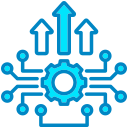Start with a Skills Baseline and a Future Map
Use self-assessments, manager validation, portfolio reviews, and code analysis to reveal strengths and gaps. One team discovered hidden Kubernetes expertise in support staff, sparking an internal bootcamp. How do you identify your quiet experts? Share your approach below.
Start with a Skills Baseline and a Future Map
Anchor your plan to the systems you intend to build: event-driven services, zero-trust networks, or AI-driven analytics. Translate architecture into competencies and proficiency levels. Invite architects and product leaders to co-author the skill map for shared ownership.
Start with a Skills Baseline and a Future Map
Not every gap is equal. Prioritize by business impact, then plan quarterly milestones. A mid-size fintech ran three 10-week sprints and cut incident resolution by half. Start small, celebrate early wins, and keep momentum with visible progress.
Start with a Skills Baseline and a Future Map
Lorem ipsum dolor sit amet, consectetur adipiscing elit. Ut elit tellus, luctus nec ullamcorper mattis, pulvinar dapibus leo.





